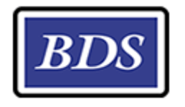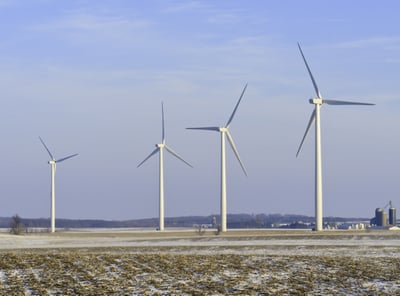In the quest for sustainable energy, wind power has emerged as a leading contender, harnessing nature's force to generate clean electricity. However, at the heart of wind turbine technology lies a crucial component that faces immense challenges — the bearing systems. These components, essential for the proper functioning of turbines, face high loads, harsh conditions, and demand continuous innovation to enhance efficiency and durability.
Wind Turbine Bearings
Wind turbines typically utilize several types of bearings to support various components and manage the complex loads within the system. The key types of bearings found in wind turbines include:
- Mainshaft Bearings: These bearings support the mainshaft, which connects the rotor hub to the gearbox. They handle significant axial and radial loads caused by wind forces and rotor weight. Mainshaft bearings are often large-sized and can be either spherical roller bearings, tapered roller bearings, or cylindrical roller bearings, depending on the turbine design.
- Pitch and Yaw Bearings: Pitch bearings allow blade angle adjustment for optimizing wind capture, while yaw bearings enable the turbine to turn and face the wind. These bearings experience relatively lower but continuous movements and loads, often utilizing slewing bearings, spherical roller bearings, or double-row ball bearings.
- Generator Bearings: Bearings within the generator support the rotational motion of the shaft and handle the electrical generator's forces and loads. These can be cylindrical roller bearings, deep groove ball bearings, or angular contact ball bearings, depending on the generator design.
- Gearbox Bearings: Gearbox bearings manage the forces and speeds generated by the gearbox, transmitting power from the rotor to the generator. They often include cylindrical roller bearings, spherical roller bearings, or tapered roller bearings, depending on the gearbox's size and design.
- Support and Auxiliary Bearings: Additional smaller bearings are used throughout the turbine for various auxiliary systems, such as cooling fans, braking systems, and hydraulic mechanisms. These can be ball bearings, roller bearings, or specialty bearings depending on their specific application requirements.
Each type of bearing in a wind turbine serves a unique purpose, enduring different loads and operating conditions. These bearings collectively ensure the turbine's smooth operation, translating wind energy into electricity efficiently and reliably. Manufacturers and engineers continuously innovate and optimize these bearing designs to enhance durability, reduce maintenance, and improve overall turbine performance.

Challenges in Wind Turbine Bearings
Wind turbine bearings endure extreme conditions, subjected to enormous loads, variable wind speeds, and fluctuating temperatures. These challenges pose significant obstacles in maintaining optimal performance and reliability. Some prominent challenges include:
- High Loads: Bearings in wind turbines must support massive rotor weights and manage dynamic loads resulting from wind speed variations. These fluctuating loads can lead to fatigue, wear, and premature failure.
- Harsh Environmental Conditions: Turbines operate in diverse climates, from scorching deserts to freezing arctic regions, subjecting bearings to temperature variations, moisture, and airborne particles. Such conditions accelerate corrosion and wear, affecting bearing lifespan.
- Maintenance and Downtime: Remote locations and the colossal size of wind turbines make maintenance a logistical challenge. Downtime for repairs or replacements can be costly and impacts energy production.
Innovations in Bearing Designs
To address these challenges, the wind energy sector has been actively investing in innovative bearing designs and materials. Several advancements have emerged, aiming to enhance durability, efficiency, and reliability:
- Multi-Row Bearings: These designs distribute loads across multiple rows of rolling elements, reducing stress on individual elements and enhancing load-carrying capacity. They offer increased reliability and longer lifespan under high loads.
- Enhanced Lubrication Systems: Innovative lubrication techniques, such as solid lubricants or advanced oil systems, improve bearing performance in harsh environments. These systems reduce friction, minimize wear, and extend maintenance intervals.
- Integrated Sensors and Condition Monitoring: Smart bearings equipped with sensors provide real-time data on temperature, vibration, and load distribution. This data allows for predictive maintenance strategies, reducing downtime and optimizing performance.
- Advanced Materials: Utilizing high-performance materials, such as ceramics or advanced steel alloys, improves bearing resistance to wear, corrosion, and fatigue, enhancing overall reliability.
- Sealing Solutions: Upgraded sealing technologies prevent contaminants from entering the bearing, prolonging its life by reducing the impact of harsh environmental conditions.
Future Perspectives
As the wind energy sector continues to expand, bearing technology remains a focal point for further improvements. Future innovations may revolve around:
- Nanotechnology applications for stronger, more resilient materials.
- Development of self-lubricating and self-healing bearings to minimize maintenance needs.
- Implementation of machine learning and AI for predictive maintenance, optimizing operational efficiency and reducing downtime.
In the journey towards a sustainable future, wind energy stands as a beacon of hope. The challenges faced by wind turbine bearings are significant but not insurmountable. Continuous innovation, driven by a commitment to efficiency and sustainability, fuels the development of bearing designs that are more resilient, durable, and efficient. These advancements pave the way for a future where wind power plays a more substantial role in meeting our energy needs, contributing to a cleaner and greener planet.

Bearing & Drive Systems is ISO 9001:2015 Certified: Premier Source of Bearings and Power Transmission Products and houses the largest inventory of bearings in North America. Please visit our website to learn more all our services, including repairs, modifications and manufacturing.






